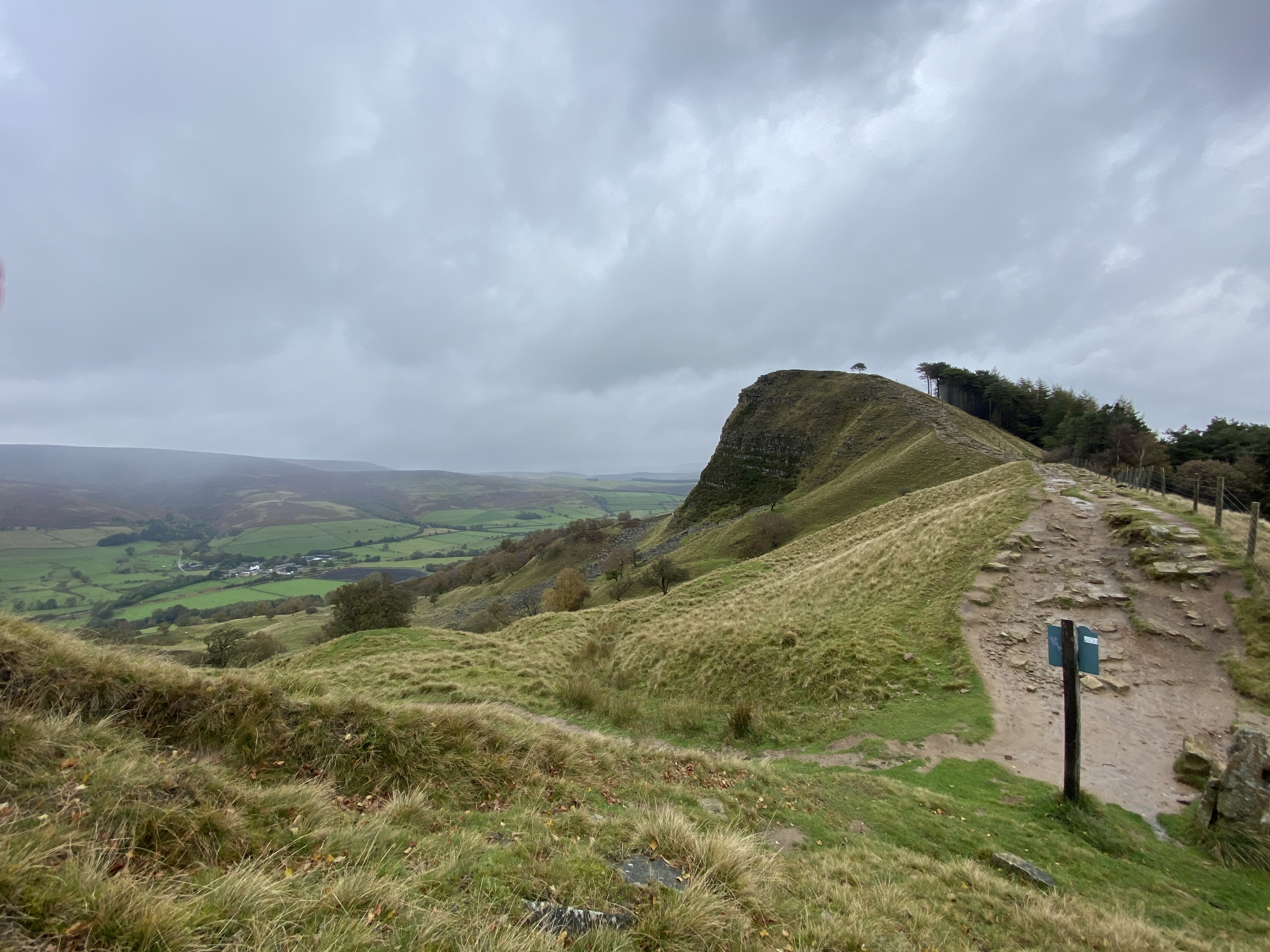Separating Edale from Castleton, and the limestone of the White Peak from the millstone grit of the Dark Peak, the Great Ridge straddles the heart of the Peak District and provides a fantastic ridge walk. The path, which is extremely popular with walkers with stunning views of the Hope Valley, is badly eroded by footfall and the elements, is in need of repair.
About 500m of path improvements, between Hollins Cross and Back Tor, will complement work that was done on the path in early 2000s between Hollins Cross and Mam Tor by both the National Trust and Peak District National Park Authority. The work requires the footpath to close for approximately 8 weeks from March 2021 until May 2021.
The work will repair the heavily worn and eroded path that has widened onto the surrounding habitat on a stretch of the remaining section along the Great Ridge. This will protect the habitat surrounding the route by helping walkers to keep to the path. It will also improve conditions underfoot, making the route safer, more accessible and visually in keeping with the landscape. The restoration forms part of the British Mountaineering Council’s (BMC) Mend our Mountains: Make One Million campaign. The restoration of the iconic Great Ridge footpath in the Peak District is also receiving funding from Peak District National Park Authority, Oglesby Charitable Trust, Ramblers Association and HF Holidays.
On-the-ground delivery of the footpath restoration is being carried out by Moors for the Future Partnership, a partnership that aims to restore all aspects of moorland ecosystems from footpaths (to stop the spread of erosion), to revegetating bare peat. The restoration of the permissive footpath on the Great Ridge is a key part of protecting these fragile and important ecosystems. The materials used will require a crucial period to weather, in order to achieve an improved blending with the surrounding landscape.
The footpath will be closed for the duration of the restoration work, due to finish in May 2021. The closure will be in place to ensure that the public remains safe during the construction period. During this time, the footpath running just below the ridgeline, parallel to the Great Ridge, will remain open, and offer an alternative route.
Matt Scott-Campbell, Conservation & Land Management Programme Manager at Moors for the Future Partnership, said:
Work to restore badly eroded footpaths is important to protect the landscape, but less obvious is the effect on wildlife. As paths widen, plants become trampled and birds nesting on the ground, often close to paths, are disturbed. Footpath restoration of eroded paths helps to protect important habitats, allowing us to enjoy the landscape with minimal damage inflicted on these iconic locations that are significant for their beauty and their biodiversity.
Cath Flitcroft, BMC Access & Conservation Officer, said:
One of the most popular walking destinations in Britain, the stunning Great Ridge has the magic combination of spectacle and accessibility. This makes it a particularly popular destination for strollers, ramblers and runners. When you take the impact of all those feet and add in the force of wind, rain and snow the result is inevitable – an eroded landscape where fragile vegetation and exposed soil gets washed away. The restoration of the Great Ridge footpath is key to protecting this well-loved trail for people to enjoy for years to come, and is part of a national BMC campaign to repair heavily eroded paths and trails in all 15 National Parks.
Paul Titterton, Conservation Works Officer at Moors for the Future Partnership said:
The works being undertaken will help to reduce the impacts of erosion helping to safeguard the landscape along this popular walking route. The Great Ridge is an iconic path with historical significance too as it is so close to the hillfort at Mam Tor - one of the only excavated hillforts in the Peak District. The path is significant to many people, and these works will help to preserve this enjoyment with minimal disturbance to the surrounding habitat.

